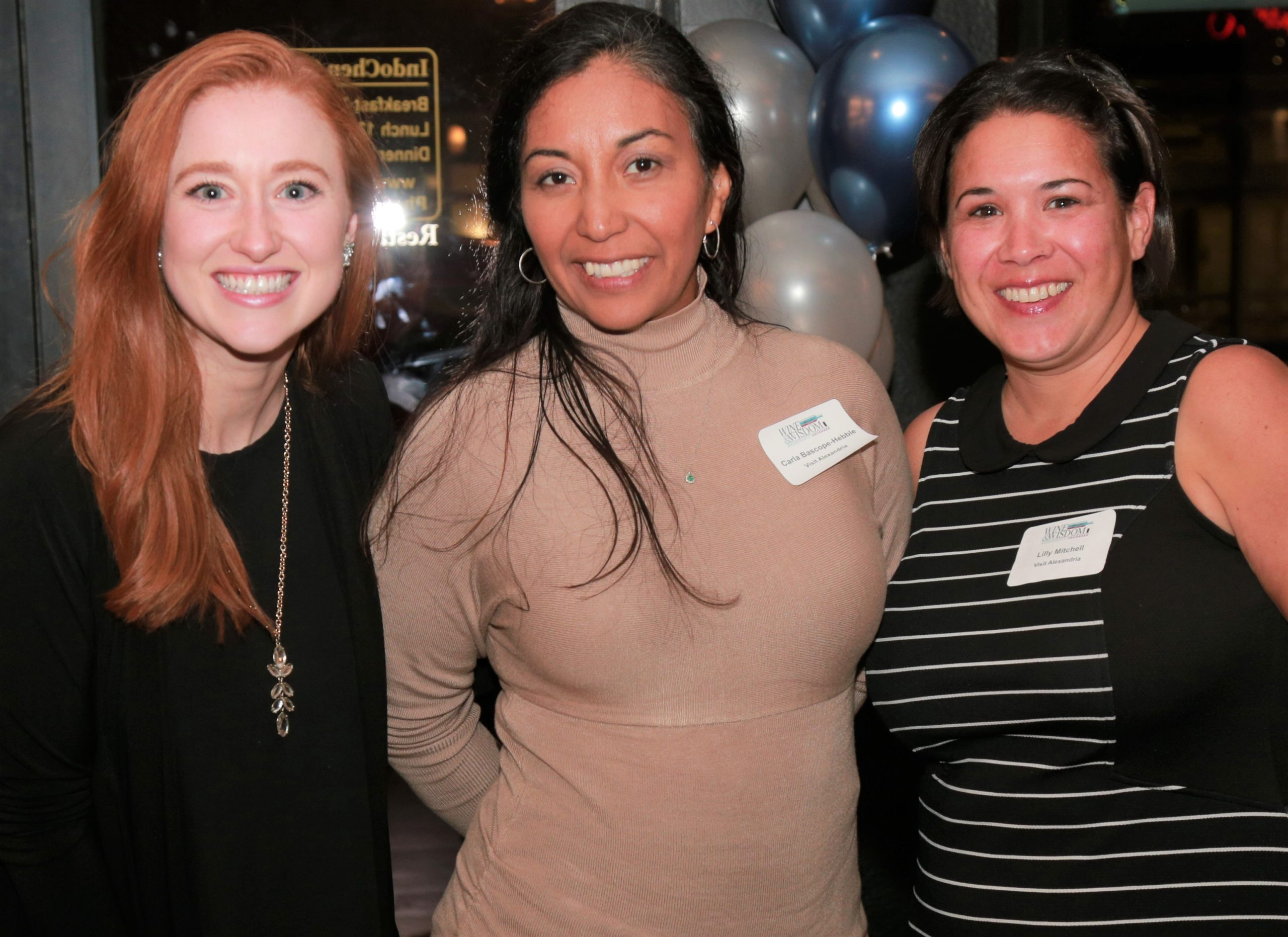Whether virtual, hybrid, or in-person, planners and stakeholders are reviewing, revising and redefining the ROI of an event. The stakes are at an all-time high to deliver curated content and engage the participant, while also satisfying KPIs and deliverables to the event stakeholders. This April, Visit Alexandria and LA Tourism hosted a panel at the annual “Breakfast and Blossoms” event at D.C.’s National Press Club to discuss meetings strategies in the current environment. Keep reading for highlights from our panel of industry thought leaders.
Panelists:
Marlie Brill, Content Manager, AWS Global Events
Kyle Jordan, Director, Meetings, INFORMS
Shauna Peters, VP & Marketing Strategist, mdg, A Freeman Company
Moderator: Jamie Murdock, Managing Vice President, Sales, Maritz Global Events
1. Unveiling Your Conference: Registration Timing and Attracting
These days, capturing the attention of your audience requires a new way of crafting your messaging that focuses on participant emotion and not just on the intent of the message. It also requires knowing your audience and acknowledging that their behaviors may have changed over the past two years. The “great resignation” has created a mass exodus of employees. Organizations are getting savvy and using new ways to capture the participant attention by illustrating what they are missing. Shauna Peters with mdg noted how their agency works with clients to develop marketing strategies that create excitement while also generating FOMO (fear of missing out). Additionally, with constantly fluctuating public health concerns, participants are waiting until the last minute to register for events. The six month save-the-dates are no longer relevant. You can help control this trend on your end by ensuring participants are incentivized to register sooner with lower prices.
Another way to draw participants is by partnering with the local destination marketing organization of your venue city. Utilize your destination partners (DMO/CVBs) as a resource for public health updates as you design the event, discover what’s unique to draw participants to extend their stay versus just staying for the main dates of the conference. Many destinations can provide you with “bleisure” resources and perks you can extend to your participants.

Your destination marketing partner can help enhance participants’ experience. Image Credits: Kristian Summerer for Visit Alexandria (left and center); Adedayo “Dayo” Kosoko for Visit Alexandria (right)
2. On-site Engagement
Engage guests in the program and environment you’ve intentionally designed to evoke desired emotions, memories and outcomes. The designed environment should have two audiences in mind: the participant and sponsors/exhibitors. For in-person events, create an experience that participants can’t get anywhere else. Redefine the traditional panel experience; anyone can watch a panel or a speaker at home or on Zoom. For example, encourage your moderator to pose informal discussion breakouts between questions. Whereas an online format might center around information-sharing, in-person events offer exhibits, transactions and networking opportunities that cannot be replicated in a virtual setting. Note that you’ll want to balance being interactive with participants’ increasing desire for personal space and social distance.
One silver lining of the pandemic is that it has offered a “reset button” for both participants as well as meetings professionals to reflect and refresh elements of your event—for instance, addressing growing priorities such as sustainability, DEI, etc. As you develop your event environment, keep in mind ways that you can make key changes to match the current landscape and needs of your guests.
Lastly, you can add value for participants by letting exhibitors provide educational learning opportunities, either via informal learning experiences on the trade floor or dedicated breakouts. At Amazon Web Services’ annual conference, exhibitors are given a breakout session, and participants score the session afterwards to ensure that the content is informational rather than a product pitch. Exhibitors may send fewer representatives and occupy smaller footprints at events but will experience a higher ROI as participants return at a faster pace, gaining greater brand presence.

Breakfast and Blossoms 2022 at the National Press Club; Image Credit: Mary Cruz for Visit Alexandria
3. Extending the Impact of Investment
Help participants recall, reconnect and apply their experience once they are back home or at the office by activating memories and reinforcing their investment in the event that your organization created for them. Adding digital content concurrently alongside in-person activities can be prohibitive; however, digital content can play a role in extending the impact of your event after the fact. Perhaps digital content is translated for your international participants for an even wider reach. At Amazon Web Services’ annual event, keynotes are streamed, and breakout sessions are recorded and available on YouTube by subscription. Meanwhile, some companies are creating distinct online and in-person events separated by six months to create year-round impact. These events should be seen as two different value propositions and can even target separate audiences.
After your event, survey follow-ups provide an additional opportunity to connect with participants as well as plan for an even more impactful and memorable event next year. Kyle Jordan of INFORMS shared that the key to his survey success is keeping it to six questions that take less than three minutes for participants to answer. These questions should determine key drivers and influencers for participants and should not duplicate information you already know about them. Additionally, the platform you use to push the survey out should speak to the messaging you want to get back, be it numerical data, long-form responses, or something else. You can preview a copy of the survey here.
Insider Tip: Visit Alexandria is a destination marketing organization which offers customized services to help you draw in participants and create a successful event.







